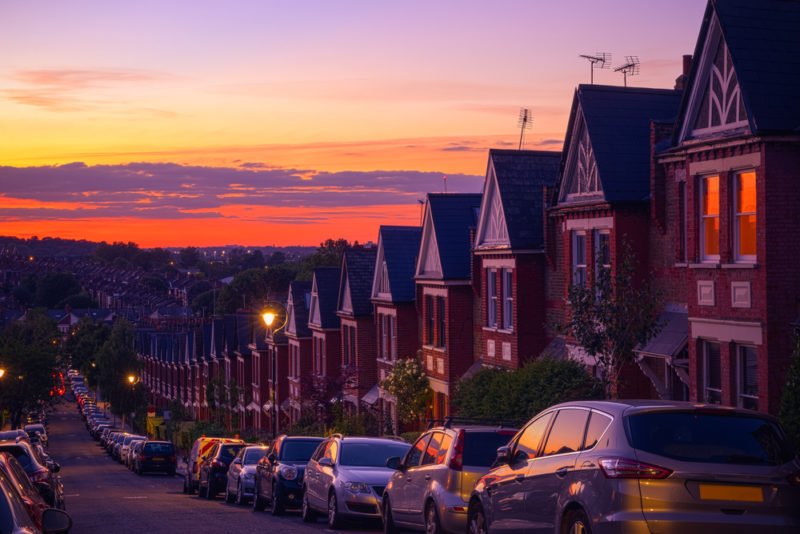When choosing a home, the decision often extends beyond aesthetics and cost. Two popular housing options in many regions are semi-detached and end-of-terrace houses. Each presents unique features, advantages, and disadvantages, making them suitable for different lifestyles and preferences.
This article explores a comparative analysis of semi-detached and end-of-terrace houses, providing insights into their space, privacy, affordability, location, and architectural characteristics. By examining these aspects, we intend to offer a comprehensive guide that assists potential homeowners or investors in making an informed decision that aligns with their personal and financial needs.
Understanding Semi-Detached Houses

Definition and Description:
Semi-detached houses are a common residential style where two homes are joined side by side, sharing a common wall. These properties often exhibit mirrored layouts, with each house having its entrance, living area, kitchen, and bedrooms. Typically ranging from two to three storeys, semi-detached houses are known for their balance of shared and private spaces.
Advantages:
- Privacy: Semi-detached homes offer more privacy than terrace houses due to the shared wall with only one neighbor. This setup is ideal for those who prefer a quiet living environment.
- Space: These homes generally have larger floor plans and outdoor areas, providing ample space for gardens, play areas, or driveways.
- Location: In suburbs, semi-detached houses often cater to those seeking a residential atmosphere away from the hustle and bustle of urban centers.
- Resale and Maintenance: Seen as more luxurious, semi-detached homes can be easier to resell. Shared maintenance costs with the neighbor can also be a financial advantage.
Disadvantages:
- Cost: The larger size and perceived luxury of semi-detached houses make them more expensive than terraced houses.
- Flexibility: While they offer more space, there may be limitations regarding renovations and customizations due to the shared structure.
Understanding End-of-Terrace Houses

Definition and Description:
End-of-terrace houses are located at one end of a row of terraced houses, sharing only one party wall with a neighbor. This positioning exposes one side of the place, offering distinct advantages in light and ventilation.
Advantages:
- Light and Ventilation: The additional exposed wall produces more natural light and improved ventilation, creating a more airy and pleasant living environment.
- Reduced Noise: With only one attached home, end-of-terrace houses experience less noise from neighbors, which benefits those seeking a quieter residence.
- Privacy: These houses offer a level of confidentiality similar to semi-detached houses, with the benefit of having fewer immediate neighbors.
Disadvantages:
- Location: End-of-terrace houses are often found in less attractive areas than neighborhoods predominantly featuring semi-detached houses.
- Space Limitations: Generally, they are smaller than semi-detached houses, which might be a consideration for families or those seeking more spacious living quarters.
Comparative Analysis

Choosing between a semi-detached and an end-of-terrace house often hinges on specific preferences and needs. This section compares these two types of homes across various dimensions:
- Space and Privacy: Semi-detached houses generally offer more internal and external space. This additional space can accommodate larger families or those desiring spacious living areas and gardens. Regarding privacy, both housing types have their merits, but semi-detached homes typically have an edge due to having only one shared wall. End-of-terrace houses benefit from having one side completely open while sharing two walls with neighbors, which can also enhance privacy to some extent.
- Affordability: End-of-terrace places are usually more affordable than semi-detached homes. This affordability stems from their generally smaller size and, in some cases, less desirable locations. An end-of-terrace house might be a more viable option for first-time buyers or those with budget constraints.
- Location and Lifestyle: Semi-detached houses are predominantly found in suburban areas, offering a quieter, more family-oriented environment. End-of-terrace homes are more common in urban areas, providing easier access to city amenities. The choice here depends on one’s lifestyle preference: a calm suburban life or the vibrancy and accessibility of urban living.
- Architectural and Design Differences: Structurally, the shared wall of a semi-detached house is centrally located, while an end-of-terrace house shares a side wall. This difference can influence natural light, ventilation, and the potential for extensions or renovations.
- Resale Value and Market Demand: Semi-detached houses, often viewed as more desirable due to their size and privacy, may have a higher resale value. However, the affordability of end-of-terrace homes makes them attractive to a broader range of buyers and investors, making them quicker to sell.
Factors to Consider When Choosing
When deciding between a semi-detached and an end-of-terrace house, several factors should be taken into account:
- Personal Preferences: Individual needs such as the desired amount of living space, privacy levels, and lifestyle preferences play a crucial role in this decision. One should consider current and future lifestyle requirements, including family size and work-from-home needs.
- Financial Considerations: Budget constraints are paramount. Potential homeowners should assess the purchase price and ongoing costs like maintenance, property taxes, and utilities. It’s essential to factor in the long-term financial implications of the choice.
- Future Plans: Consideration for future needs is vital. This includes the potential for family growth, the likelihood of needing to work from home, the desire to entertain, or plans to rent out a part of the property.
Conclusion
Both semi-detached and end-of-terrace houses offer unique advantages and cater to different needs and preferences. Semi-detached homes are generally more spacious and private, making them suitable for larger families or those seeking a quieter suburban lifestyle. On the other hand, end-of-terrace houses offer affordability and urban accessibility, appealing to first-time buyers or those prioritizing proximity to city amenities. Ultimately, the decision depends on aligning one’s personal and financial circumstances with the characteristics of each house type. By carefully considering these factors, potential homeowners can make an informed decision that best suits their long-term goals and lifestyle.

